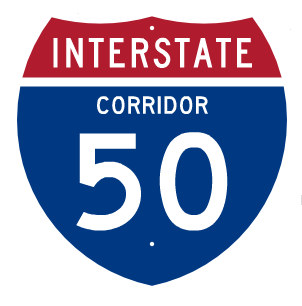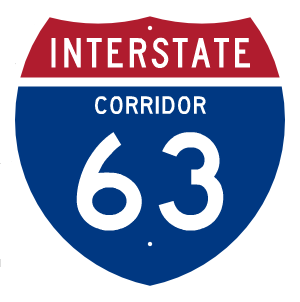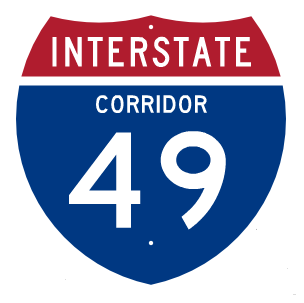Future Interstate 14 Corridor Concepts
14th Amendment Highway
|



14th Amendment HighwayThe 14th Amendment Highway study was conducted by a team of consultants led by Cambridge Systematics, Inc. for the Federal Highway Administration (FHWA), and was submitted to Congress pursuant to Section 1927 of the federal transportation authorization legislation known as SAFETEA-LU. This study is one of two companion studies authorized by SAFETEA-LU legislation. The studies focused on highway corridors originating in Georgia, and include the 14th Amendment Highway and the 3rd Infantry Division Highway. The 14th Amendment Highway was proposed to extend from Augusta, Georgia to Natchez, Mississippi, servicing intermediate cities of Macon and Columbus, Georgia, and Montgomery, Alabama. A portion of the highway corridor in Georgia was designated as a Congressional High Priority Corridor (HPC-6) under Section 1105 (c) of the Intermodal Surface Transportation and Efficiency Act (ISTEA) of 1991. The segment from Columbus to Macon was previously studied by the Georgia Department of Transportation (GDOT) as part of the Governor's Roadway Improvement Program (GRIP). The first stage of this study focused on preliminary data collection, identification of potential highway segments, alternative alignments and conceptual engineering designs for each segment, estimates of construction costs, and recommendations for additional planning studies to be conducted in an optional phase II as directed by FHWA. Project work focused on data collection, initial outreach activities, and definition of project control points in each of the key service and terminus cities. Engineering design work took place in the fall of 2010, and was followed by cost estimation work, and recommendations for further planning studies in the spring of 2011. The project was completed in June, 2011 and its findings were submitted to Congress. .jpg)
I-14I-14 was first proposed in the 2005 MAP-21 Act under the title "The 14th Amendment Highway" envisioned to extend from Augusta Georgia to Natchez Mississippi. A feasibility study was completed and came to the conclusion that projected traffic need was low for this particular route. Support in state transportation departments in Georgia and Alabama never really formulated. Mississippi and Louisiana were more receptive especially after Texas took the initiative to create the Central Texas Corridor. In 2018, a new bill (H.R. 6111) was introduced into the U.S. House of Representatives to extend the Future I-14 Central Texas corridor created by Congress in 2015 FAST Act through Louisiana and Mississippi, but did not receive a full vote. In 2021, the new infrastructure bill approved by the House of Representatives "INVEST in America Act" included the entire I-14 Gulf Coast Strategic Highway route from Texas to Georgia. |
|---|---|
Texas
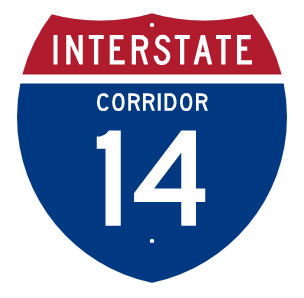



|

I-14The I-14 Central Texas Corridor follows the US 190 corridor from TX 63 near Jaspar to Hunstville, Bryan, Killeen as studied in 2011. I-14 forms from two branch corridors, I-14 North starting at I-20 in Midland, and I-14 South along US 190 to San Angelo. I-14 continues to the existing I-14 in Killeen then generally follows U.S. 190 to Jaspar Texas. A bypass, I-214, was included south of College Station and Bryan Texas.
|
Louisiana



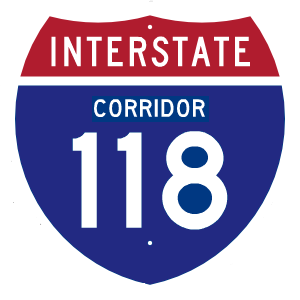




|
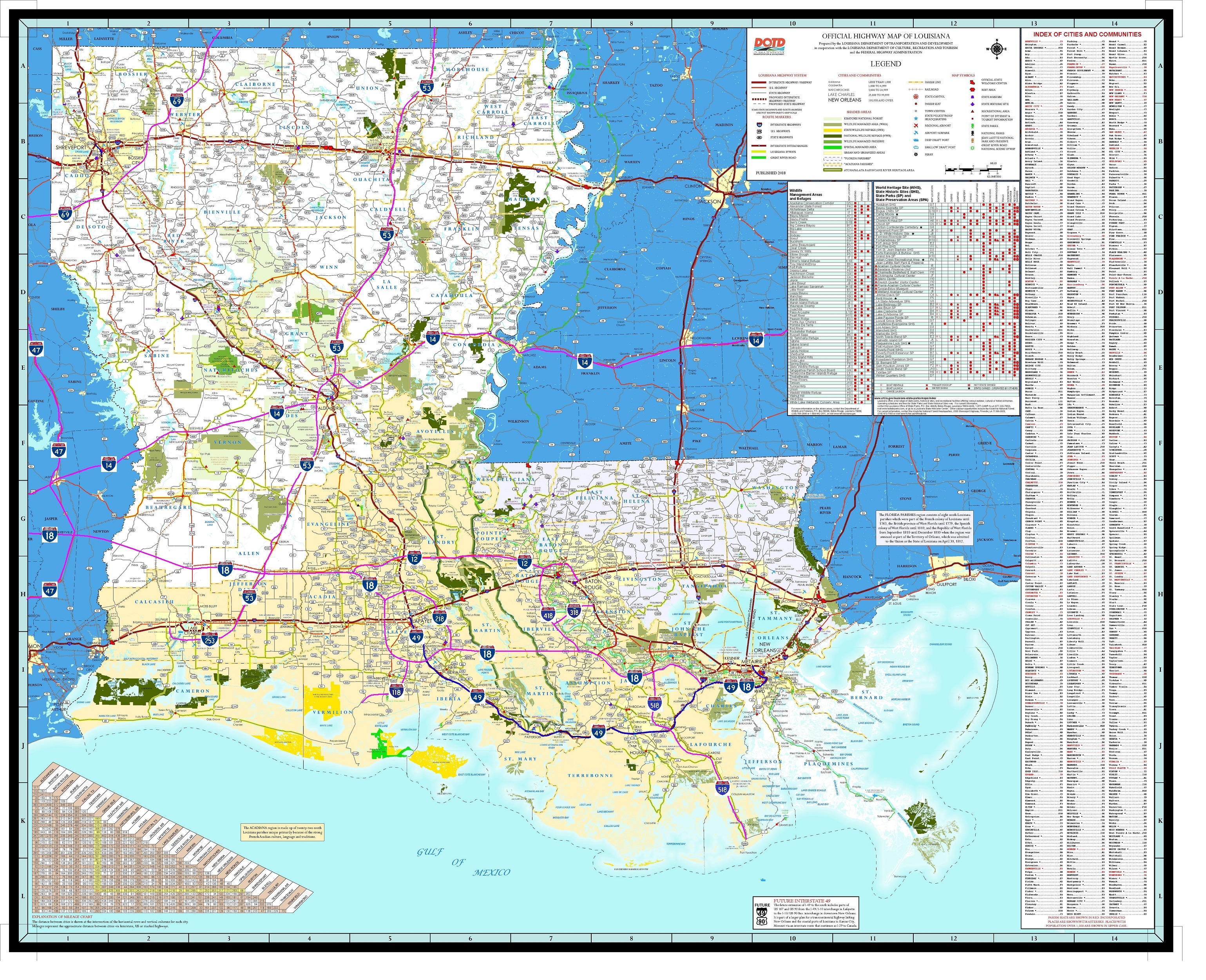
I-18I-18 is the proposed designation for a new terrain freeway running from New Orleans, Donaldsonville, Lafayette, Eunice, Kinder, the continuing west to the Texas border at the Sabine River to Jaspar Texas and ultimately to I-20 and I-45 in Dallas Texas. I-18 would start at I-310/LA 3127/Future I-49/U.S. 90 interchange. I-18 follows LA 3127 forming the southern segment of the Westbank Expressway Connector Toll-Road. LA 3127 was actually built in the 1970's with enough right-of-way for a future four-lane highway from I-310 to LA 70 in Donaldsonville. I-518 is the proposed designation for the LA 1 Expressway Toll-Road and the proposed Houma-Thibodaux LA 3127 to U.S. 90 Connector. LaDOTD has been building the LA 1 Expressway toll-road from Port Fourchon to US 90 west extension and now is planning to build the Houma/Thibodaux/LA 3127 Connector initially as a four-lane divided highway the eventually as a fully controlled access highway. I-18 continues west to Lafayette forming a second Atchafalaya Basin freeway crossing, providing and alternative to the traffic congestion of I-10 in Baton Rouge. I-418 forms the northern segment of the Westbank Expressway Connector and I-318 would be the connector to the proposed South Baton Rouge Mississippi River Bridge near Gabriel. West of the new Atchafalya Basin Crossing Bridge, I-18 bypasses south and west of Lafayetter to form the proposed Lafayette Metropolitian Expressway, while I-218 forms the east and north segments of the extended Lafayette Metropolitan Expressway. An I-118 spur connector runs from I-18 south of Lafayette, bypassing east of Abbeville, crossing the Vermillion River with a high-level bridge between the Port of Vermillion and Intracoastal City, terminating at LA 82. The routing of I-18 becomes the alternate to I-10 for traffic to and from Houston to New Orleans. I-18 continues northwest to Eunice to run generally follow US 190 to Texas. I-18 then runs northwest to Dallas Texas forming a New Orleans to Dallas cross-link that avoids I-10 to Houston and I-45/I-20 to Dallas. I-53I-53 is the proposed designation for the proposed US 165 Freeway from Lake Charles to Monroe. South of Lake Charles, I-253 extends from I-53 to the Port of Lake Charles. I-53 could bypass Alexandria to the west, connecting the Alexandria International Airport, or it could be routed with I-49 through the city. I-53 continues to follow the US 165 freeway with new freeway bypasses around many of the towns as appropriate. I-53 then becomes the "I-69 Spur Extension" studied by LaDOTD and the Arkansas Highway Department in 2009 and is the conversion of the I-530 "I-69 Spur" that is part of the I-69 project in Arkansas. I-53 would connect to I-30 and I-40 in Little Rock Arkansas. Congress recently created the Future I-57 Interstate Corridor and plans to convert the existing US 67 freeway northeast of Little Rock to I-57, then complete the freeway to US 60 in Missouri. The existing US 60 four-lane highway will also be converted to I-57 eastward to connect to the existing I-57 in Sikeston Missouri. The combination of I-53 and I-57 forms a continuous trade corridor freeway from Chicago Illnois to Lake Charles. Altogether the I-18 system with I-53 links all the southern ports of Louisiana. The ports at Baton Rouge/Port Allen, the Port of South Louisiana along the Mississippi River, and the Port of New Orleans are all connected by the I-18/I-418 Westbank Expressway. Port Fourchon is connected by I-518. The ports south of New Orleans along the Mississippi are connected by completing the LA 23 four-lane to Venice. The other ports in southwest Louisiana could be linked through a secondary system of four-lane divided highways like LA 27 and LA 82 to Cameron, the Sabine Pass, Freshwater City, and the Port Vermillion/Intracoatal City via I-118 south from Lafayette. I-14I-14 Central Louisiana Corridor was proposed as part of the Future I-14 Gulf Coast Strategic Highway. The Louisiana Department of Transportation and Develop removed all planning and budgeting for Future I-14 it the state transporation planning documents in 2023 because it was determined too expensive at $7 billion and the state is going to focus on existing highways in the state. |
Mississippi

|
.jpg)
I-14I-14 would continue along U.S. 84 from Natchez to Laurel. I-14 would run concurrent north with I-59 and I-20 to the Alabama border I-61The Senate infrastructure bill, S 1931 - Surface Transportation Reauthorization Act of 2021, included the Kosciusko to Gulf Coast Corridor starts at Interstate Route 55 near Vaiden, Mississippi, running south and passing east of Jackson Metro Area, connecting to United States Route 49 north of Hattiesburg, Mississippi, and generally following United States Route 49 to Interstate 10 in Gulfport, Mississippi. Along with I-14 created in the House infrasture bill, the Kosciusko to Gulf Coast Corridor will also be an Interstate corridor and will likely have the designation Interstate 61. |
Alabama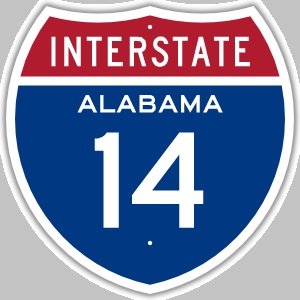
|
.jpg)
I-14I-14 is the Middle Alabama Corridor in the INVEST Act bill of 2021. The select route is actually the I-85 extension proposed by ALDOT from the Montgomery Outer Loop to I-20. I-14 runs concurrent with I-85 then branches off, generally following U.S. 80 to Columbus Georgia |
Georgia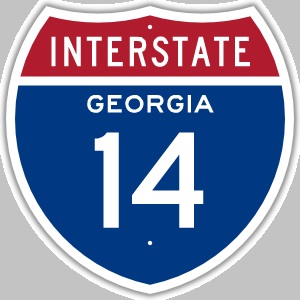
|
.jpg)
I-14I-14 is the Georgia Corridor in the INVEST Act bill of 2021. I-14 follows U.S. 80 from Columbus Georgia, GA 96 and GA 49 to I-75. I-14 runs concurrent with I-75 to Macon Georgia, then GA 57 and GA 88, the Fall Line Expressway, to I-520 in Augustus. |





.jpg)








_Page_1.jpg)
_Page_2.jpg)
_Page_3.jpg)
